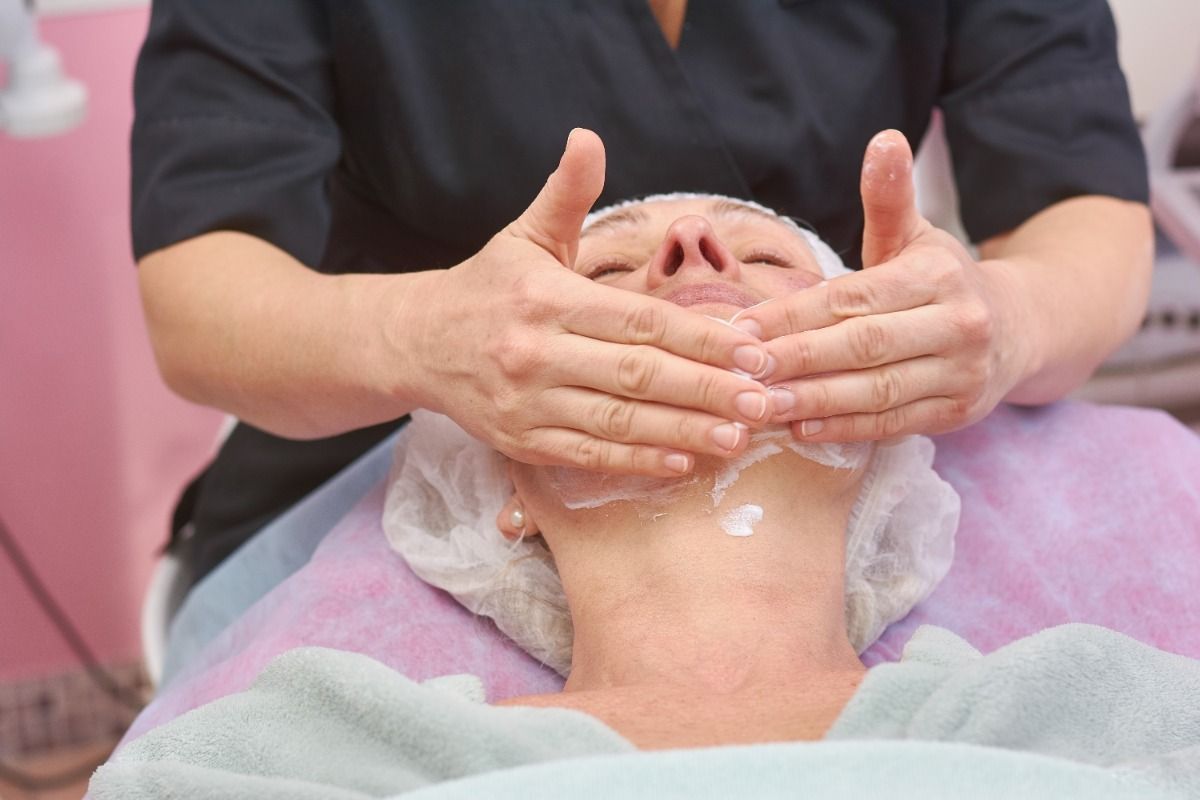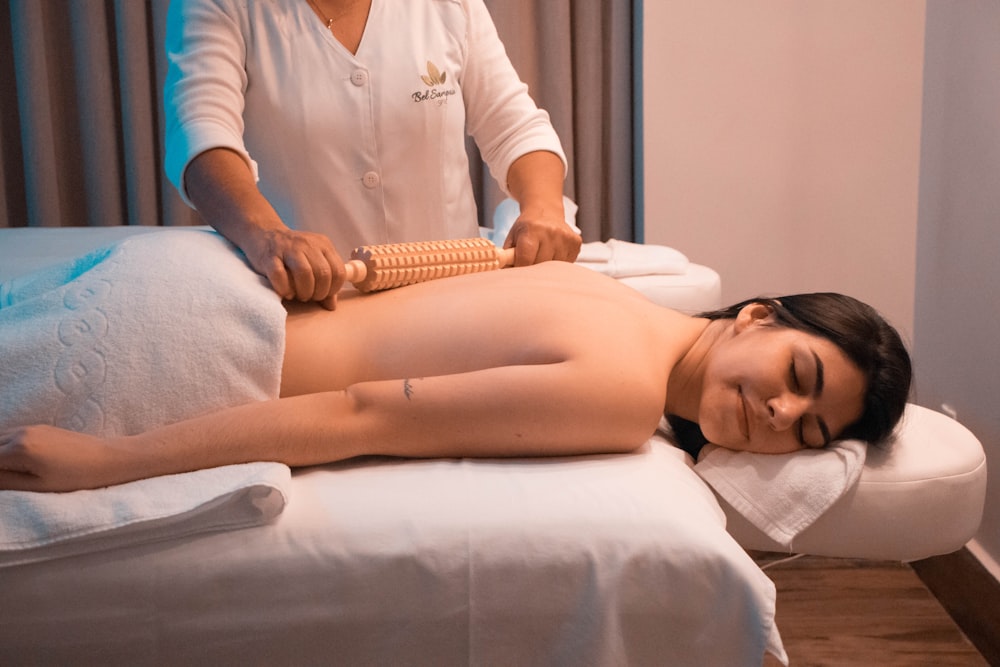
Many people seek out lymphatic drainage massages because the fluid of the lymphatic system in the human body is responsible for helping flush toxins and waste from bodily tissues. We all have lymphatic fluids in our bodies, but excessive amounts of this fluid can lead to unwanted issues such as swelling and inflammation.
Experimenting with methods of lymphatic drainage can help to remove both the toxins contained within the lymphatic fluid from your body, and the pressure created by the build-up of fluid. Certain people who regularly experience issues with lymphatic fluid (such as those with fibromyalgia and lymphedema) are more likely to practice lymphatic drainage activities regularly.
Below, we’ll explore the potential benefits of lymphatic drainage, how to conduct a lymphatic massage on yourself at home, and what kind of changes you can expect to notice post-drainage.
What Exactly is Lymphatic Drainage?
The lymphatic system is an essential part of the body’s immune system. Through a network of “lymph nodes” throughout the body, the lymphatic system drains fluids to be delivered back into your bloodstream. The lymphatic system also removes bodily waste and carries white blood cells, essential for preventing and tackling infection.
When obstructions occur in the lymphatic system, fluid can begin to build up. This is where lymphatic drainage, a form of specialist massage therapy, can come into play.
Lymphatic drainage massage has been used throughout history to treat lymphedema, a condition defined by chronic swelling throughout the lymphatic system, after a lymph node removal.
However, it’s not just those with underlying health conditions who seek lymphatic drainage massage treatments. In fact, many people have begun incorporating lymphatic drainage into their beauty regimes. This is because lymphatic drainage treatments can help to minimize the look of swelling or puffiness in the face, arms or legs, as well as rejuvenate tired skin, resulting in a more youthful complexion.
Lymphatic massage uses gentle pressure to open the lymphatic system and allow fluids in your body to naturally drain.

Benefits of Lymphatic Drainage Massages
The lymphatic system relies on the movement of smooth muscles for the transportation of fluid through lymph vessels. Certain health conditions can interrupt the normal flow of lymph fluid, causing it to build in a particular area of the body (usually the legs and arms), causing swelling.
People can develop lymphedemas as a result of lymph node removals, cancer, infections, and any condition which might damage the lymph system.
The acceleration of the lymphatic system via massage is extremely valuable for people with lymphatic system issues, according to studies. The use of lymphatic massage can also help to reduce swelling after a surgery.
Interestingly, one review also found lymphatic drainage could be more effective than connective tissue massage for relieving the symptoms of both depression and stiffness in fibromyalgia patients. However, some people will not be suitable for lymphatic massage, as blood clots, heart failure, kidney problems, and circulation problems can lead to significant issues with drainage acceleration.
From an aesthetic perspective, research into the benefits of lymphatic drainage when it comes to physical appearance is still limited. One study in 2015 found a link between the skin and lymphatic vessels, finding that the functioning of dermal lymphatic vessels could have an impact on skin sagging.
Further studies conducted over the years have suggested lymphatic drainage may be effective at reducing the appearance of puffiness in certain parts of the body. A study from 2010 found lymphatic drainage could reduce thigh circumference and the thickness of abdominal fat.
Researchers believe lymphatic drainage may help with:
- Reducing skin sagging and improving skin elasticity
- Reducing the appearance of cellulite
- Improving the shape of various parts of the body (perhaps even contributing to jawline slimming)
How is Lymphatic Drainage Performed?
Lymphatic drainage, sometimes casually referred to as a “non-surgical face lift”, usually happens at a spa or health center, and is performed by an aesthetician. If you’re looking at lymphatic drainage for medical purposes, it’s best to look for someone at a medical aesthetics clinic who is certified by the Lymphology Association of North America, or the National Lymphedema network.
At a spa, your professional will apply light pressure on the swollen, inflamed or affected area, and gentle stroking, tapping, and rubbing movements. Using flat hands and fingers, your aesthetician may stretch the skin in certain areas in the direction of your lymphatic flow, to help encourage drainage.
A bodily lymphatic drainage system will usually last up to an hour, while the facial process of lymphatic drainage usually only lasts around 30 to 45 minutes.
Lymphatic drainage is generally considered safe; however, you can check with your healthcare provider to double-check if it’s right for you. People with certain conditions, such as congestive heart failure, may not be suited to this kind of massage.

How to Perform Lymphatic Drainage at Home
It’s encouraged to go to a spa or medical aesthetics clinic to get this type of massage done. However, many people do it from home. While tools exist to help with this process, such as rollers and “scraping massage” tools, you don’t necessarily need accessories to perform this process from the comfort of your home.
Start by finding a comfortable place for your drainage session, and remember these key pointers:
- Use gentle movements, and don’t press hard enough to feel the muscles.
- Keep the hands relaxed.
- Do not massage infected or wounded areas.
- Look up a YouTube tutorial from someone certified by the Lymphology Association of North America
- Drink extra fluids (at least 2-4 glasses of water) right after the massage
Once you’re ready to practice lymphatic draining, follow these steps for a lymphatic massage:
1. Manage your breathing
Deep breathing is important during lymphatic drainage sessions, as it helps to move fluids through the vessels and lymph nodes. To practice deep breathing, try one of these breathing exercises.
2. Prepare your neck
Place your middle and index fingers of each hand on either side of the neck, just above your collarbone. Stretch the skin gently by sliding your fingers in towards the middle of the collarbone. Then, place your palms either side of your neck, just below your ears, and slowly move both hands down and back.
Moving your palms to the back of the neck, near the hairline, slide your hands together gently down towards your spine.
3. Prepare the arms
Preparing the lymph nodes under your arms will help them to accept fluid from other areas of the body. Cup your palm under the armpit and gently move your palm up towards the body in a pumping motion on both arms.
4. Prepare your knees
Place your hands behind your knees, with the fingers pointing towards each other, then practice the same “pumping” motion you used with your armpits by pushing your palms into the back of the knee.

Performing Your Lymphatic Massage
Once your body is prepared and you have your breathing in check, you can follow these steps for massaging various parts of the body:
- Face: Rest your palms on your forehead, applying gentle pressure to slowly stretch the skin downwards, aiming towards the lymph nodes in your neck. Be extra careful around your eyes, using just your ring finger in a rolling motion.
- Chest: Place your palms flat on the opposite sides of your chest, just above the breast, and move your hands up the chest and over the collarbone, progressing towards the neck. Push the skin until it feels tight on the chest, then release.
- Arms: Rest your arm on a table or armrest, then place the two middle fingers of the opposite hand inside the upper arm, just below the shoulder. Slide your fingers towards the outside of the upper arm, then wrap your hand around the outside. Gently move your hand towards the inside of your arm again.
- Thighs: Start at the top of your leg, placing one hand on the inside of the opposite thigh, close to the groin. Place the other hand on the buttock. Stretch your skin gently by moving the hand inside your thigh up and towards the outside of the thigh. Continue the stretching movement moving your hands further down the leg.
How Do You Know if Lymphatic Drainage is Working?
Notably, lymphatic drainage, while touted as an excellent tool for managing swelling, won’t necessarily have an immediate impact on your appearance. Many people who use lymphatic drainage massage techniques consistently will notice their swelling reducing over time. However, if you have a condition such as lymphedema, you may still need to use compression socks.
Generally, after a while, you should notice the area you massage seems slimmer, and the skin appears to be tighter. However, this may not be the case for everyone. You may need to consider getting professional treatment to ensure the best results.
You can also boost the overall function of your lymphatic system by:
- Reducing your consumption of processed foods.
- Drinking plenty of water to flush out toxins.
- Staying physically active with regular exercise.
- Eating fruits and vegetables.
Should You Use Lymphatic Drainage Techniques?
Using lymphatic drainage techniques can be an excellent way to reduce swelling and improve your circulation. This is often an important part of the treatment process for people caring for conditions such as lymphedema. However, it can also be a fantastic way to upgrade your beauty routine.
While not everyone will see significant results with lymphatic drainage massage, most find it a safe and effective way to minimize puffiness, improve dull skin, and enhance overall skin vitality. Some people will notice better results than others.
To find out what your DNA says about your skin type and skin traits, read your genetic skin profile within your CircleDNA results.







This Post Has One Comment
Comments are closed.